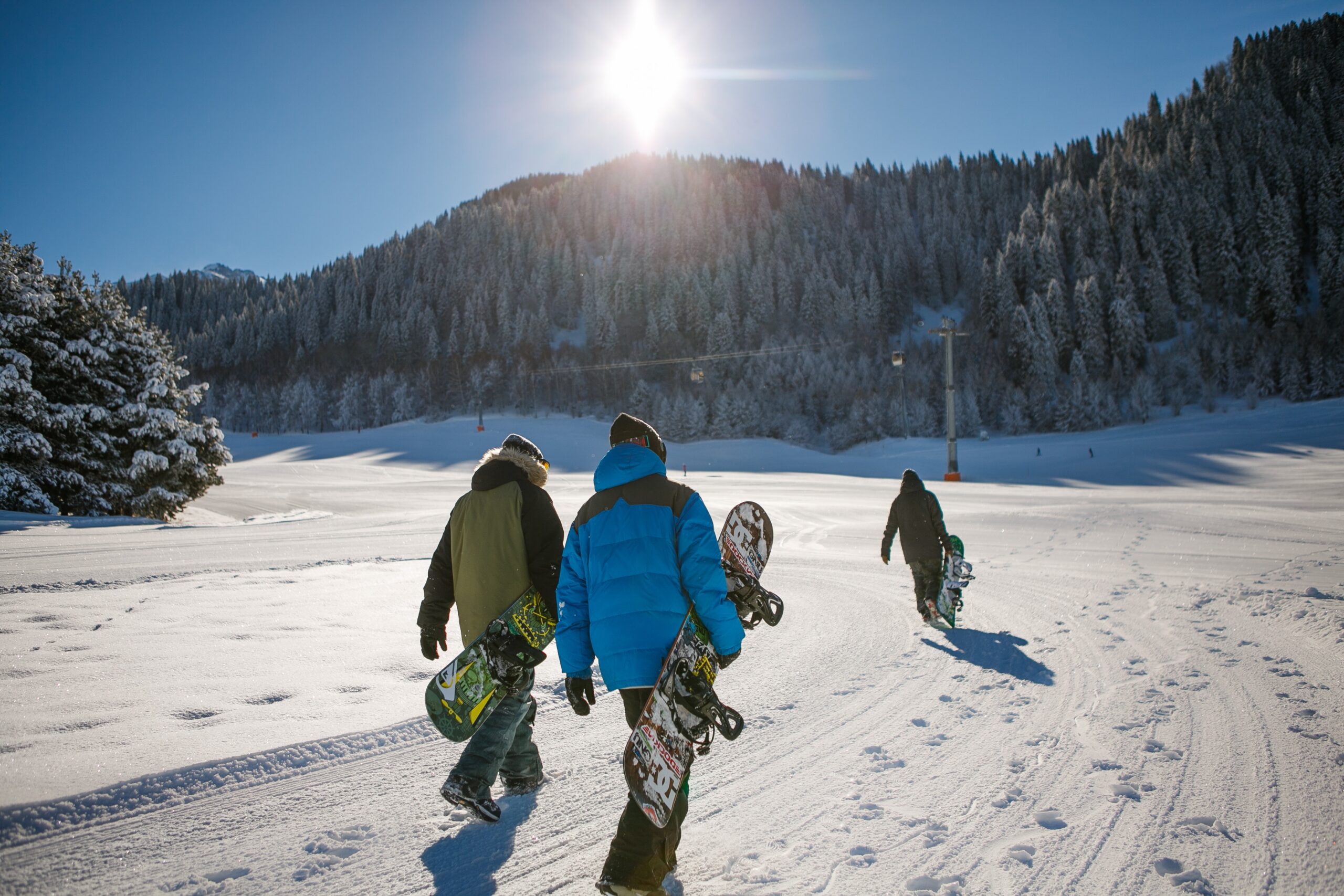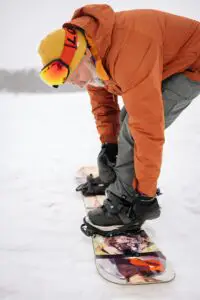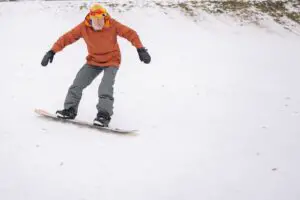Are you ready to ride the waves? Ever wondered if your snowboarding skills could translate to surfing?
In this article, we’ll explore the similarities between these two exhilarating sports and how your expertise on the slopes can benefit you in the ocean.
Grab your board, find your balance, and get ready to discover techniques that will help you smoothly transition from snowboarding to surfing.
Whether you’re a seasoned snowboarder or just starting out, this article is here to guide you on your journey to becoming a surfer.
The Similarities Between Snowboarding and Surfing
There’s a lot of similarities between snowboarding and surfing. Both sports involve riding on a board, but in different elements – snow and water.
The techniques used in both activities are quite similar. For example, your body position and balance play a crucial role in maintaining control and stability on the board. In both snowboarding and surfing, you need to shift your weight to initiate turns and maneuvers. Additionally, the use of edges is important in both sports for carving through the terrain or waves.
The feeling of gliding across the surface, whether it’s snowy slopes or ocean waves, creates an exhilarating sense of freedom that unites these two activities. Whether you’re shredding down mountains or catching waves, both snowboarding and surfing offer an incredible sense of belonging to nature’s playground.
How Snowboarding Skills Can Benefit Surfing
You can improve your surfing skills by transferring the techniques you’ve learned from snowboarding. Snowboarding and surfing share many similarities in terms of balance, body positioning, and edge control. By applying the knowledge gained from snowboarding to surfing, you can enhance your overall performance in the water.
One key technique that translates well between the two sports is maintaining a low center of gravity. Just like in snowboarding, bending your knees and keeping your weight centered helps improve stability on the board while riding waves. Additionally, both sports require proper weight distribution to maintain control and maneuverability.
Another transferable skill is understanding how to read and anticipate wave movements. While snowboarders look for changes in terrain or obstacles, surfers focus on reading wave patterns to position themselves effectively for optimal rides. Being able to analyze wave formations will help you choose the best line while riding a wave.
Furthermore, carving turns is another technique that can be applied from snowboarding to surfing. The concept of using edges and body positioning to initiate smooth turns in snowboarding directly transfers over when maneuvering on a surfboard.
Overall, by leveraging the skills you’ve acquired from snowboarding and applying them to surfing, you’ll be able to progress faster and develop a stronger foundation for riding waves with confidence and style.
The Importance of Balance in Both Sports
When it comes to the similarities between snowboarding and surfing, one key aspect is the body positioning. Both sports require a similar stance with bent knees and a forward-facing posture.
Additionally, balance challenges in waves can be just as demanding as navigating down a snowy slope, making these skills transferable between the two activities.
Similar Body Positioning
Get ready to feel the similarities in body positioning between snowboarding and surfing!
When you’re out on the slopes or catching waves, you’ll notice that both sports require a similar stance and body position.
In both snowboarding and surfing, your feet are shoulder-width apart, with your knees slightly bent and your weight centered over your board.
This balanced and relaxed posture allows for better control and maneuverability.
Whether you’re carving down a snowy slope or riding a wave, maintaining this position will help you stay stable and in control of your board.
By keeping your body aligned and balanced, you’ll be able to flow smoothly through turns and transitions in both snowboarding and surfing.
Balance Challenges in Waves
Maintaining balance in the waves can be a challenge due to the constantly shifting and unpredictable nature of the water. When you’re out there on your surfboard, it’s important to find that sweet spot where you can stay centered and in control.
The waves are constantly moving beneath you, and it’s up to you to adjust your body position accordingly. By bending your knees slightly and keeping your weight evenly distributed, you’ll be able to absorb the movements of the water and maintain stability. It’s also crucial to engage your core muscles for added support.
Transferable Skills Between?
Finding balance in the waves can be challenging, but the skills you develop on a surfboard can be transferred to other activities. When you ride that board, you not only learn to navigate the ocean’s unpredictable movements, but also gain valuable abilities that extend beyond the water.
Here are some ways your surf skills can translate into everyday life:
- Enhanced core strength: Balancing on a surfboard engages your core muscles, leading to improved stability and posture.
- Increased coordination: Riding waves requires precise timing and coordination of body movements, which can enhance your overall physical coordination.
- Improved focus: Surfing demands concentration and mindfulness as you navigate through ever-changing wave patterns, helping improve your focus in other tasks.
- Resilience and adaptability: Dealing with wipeouts and overcoming challenges while surfing builds resilience and adaptability that are useful in various aspects of life.
Techniques to Transfer From Snowboarding to Surfing
If you’re already comfortable with carving turns on a snowboard, transitioning to surfing will involve adapting your weight distribution and balance. While the basic principles of turning and balance are similar, there are some key techniques that can help you make a smooth transition from the slopes to the waves.
One important technique is to focus on shifting your weight forward and back to control your speed and maneuverability on the surfboard, just like you would do when riding down a mountain. Additionally, keeping your body low and centered over the board will help maintain stability and control in both sports.
Remember to use your upper body to initiate turns while keeping your legs relaxed for better flexibility. By understanding these techniques and practicing them consistently, you can effectively transfer your snowboarding skills to surfing and enjoy the thrill of riding the waves with confidence.
Overcoming Challenges When Transitioning From Snowboarding to Surfing
Transitioning from snowboarding to surfing can present challenges, but with practice and determination, you can overcome them. Here are a few hurdles you may encounter:
- Balance: Surfing requires a different kind of balance compared to snowboarding. The shifting waves demand constant adjustments, challenging your equilibrium.
- Paddling: Unlike snowboarding, where gravity does the work for you, paddling is essential in surfing. Building upper body strength will help you catch more waves.
- Timing: Waves come in sets, and timing is crucial for catching the best ones. Learning to read the ocean’s rhythm takes time and experience.
- Wave selection: Each wave is unique, so choosing the right one is vital. Understanding how swells break and which ones offer good rides will improve your overall performance.
Remember that transitioning from snowboarding to surfing takes dedication and patience. With perseverance, you’ll soon find yourself riding those waves like a pro!
Tips for Snowboarders Looking to Start Surfing
When it comes to transitioning from snowboarding to surfing, there are several transferable skills that can help you make a smooth transition. Skills such as balance, body awareness, and the ability to read changing conditions can all be applied in both sports.
However, it’s important to be aware of certain habits from snowboarding that may need to be overcome in order to excel in surfing. For example, relying too heavily on your edges or using excessive upper body movement can hinder your progress in the water.
Taking the time to adjust your technique and mindset can greatly improve your surfing skills. By focusing on maintaining a centered stance and using your entire body to generate power, you’ll be able to adapt to the unique demands of surfing.
In addition, it’s crucial to understand the nuances of reading waves and positioning yourself in the lineup. This requires a keen eye for spotting sets, understanding wave behavior, and making split-second decisions.
Overall, while there are similarities between snowboarding and surfing, it’s important to approach each sport with an open mind and a willingness to learn. With practice and perseverance, you can successfully transition from one to the other and continue to enjoy the thrill of riding on different surfaces.
Transferable Skills for Snowboarders in Surfing
Snowboarders can easily apply their skills to surfing due to the similar movements and body positioning. When transitioning from snowboarding to surfing, you’ll find that many skills are transferable. Here are some key skills that will help you excel in both sports:
- Balance: Just like on a snowboard, maintaining balance is crucial in surfing. The ability to shift your weight and adjust your center of gravity will come naturally to you.
- Edge control: Controlling the edge of your board is essential in both sports. Whether it’s carving through fresh powder or navigating a wave, having good edge control will give you stability and control.
- Body awareness: Knowing how to move your body and use your limbs effectively is important for both snowboarding and surfing. You’ll be able to transfer these skills seamlessly.
- Adaptability: Both snowboarding and surfing require adaptability as conditions can change quickly. Being able to adjust your technique and respond to different situations will make you a versatile rider.
Overcoming Snowboarding Habits
Now that we’ve discussed the transferable skills that snowboarders can bring to surfing, let’s talk about overcoming some of the habits that may hinder your transition.
When transitioning from snowboarding to surfing, it’s important to be aware of certain habits that you may have developed on the slopes. One common habit is relying too heavily on your back foot for control. In snowboarding, using your back foot for stability and control is essential, but in surfing, you need to distribute your weight evenly between both feet to maintain balance and maneuverability.
Additionally, snowboarders often have a tendency to lean back when riding down a slope, which can lead to problems when trying to catch waves. It’s important to retrain yourself and shift your weight forward in order to generate speed and successfully catch waves while surfing.
The Differences Between Snowboarding and Surfing
Although snowboarding and surfing are both board sports, there are several key differences between the two.
When you’re snowboarding, you’re on a mountain covered in fresh powder. The sensation of gliding down the slopes is exhilarating, with the cold air rushing past your face.
In contrast, when you’re surfing, you’re out in the open ocean. You feel the power of the waves beneath you as they lift and carry you towards shore.
Snowboarding requires bindings to attach your boots to the board, giving you control and stability.
Surfing, on the other hand, requires only a leash tied to your ankle and waxed board for grip.
Understanding these differences is crucial if you want to transition from snowboarding to surfing. While both sports share similarities in terms of balance and control, there are unique challenges that come with each one.
Frequently Asked Questions
How Does the Type of Board Used in Snowboarding Compare to the One Used in Surfing?
When comparing the type of board used in snowboarding to the one used in surfing, it’s important to note that they are different. Snowboards are designed for snow and have bindings, while surfboards are meant for water and require balance and maneuverability.
Are There Any Specific Muscle Groups That Are Utilized Differently in Snowboarding and Surfing?
In snowboarding, you use specific muscle groups like your quads and glutes to control the board. In surfing, it’s more about core strength and balance as you navigate the waves. So there are differences in the muscles utilized between the two sports.
What Are Some Common Challenges That Snowboarders Face When Transitioning to Surfing?
Transitioning from snowboarding to surfing can be challenging. You’ll have to adapt to the unpredictability of waves, which is quite different from carving on snow. Balance and timing play crucial roles in both sports, but mastering them in the ocean can take time and practice.
Are There Any Specific Techniques or Skills in Snowboarding That Do Not Directly Translate to Surfing?
There are certain techniques and skills in snowboarding that don’t directly translate to surfing. For example, carving turns on a snowy slope is different from maneuvering on a wave.
How Does the Environment and Weather Conditions Affect the Experience of Snowboarding Compared to Surfing?
When snowboarding, you experience cold temperatures and snowy conditions that create a unique thrill. In contrast, surfing offers the excitement of warm waters and ocean waves. The environment and weather greatly impact the experience of each sport.
Conclusion
In conclusion, snowboarding and surfing may share similarities in terms of balance and technique, but they are ultimately two distinct sports.
While your snowboarding skills can certainly benefit you when starting to surf, it’s important to recognize the challenges that come with transitioning between the two.
However, don’t let these differences discourage you. With determination and practice, you can overcome any obstacles that arise.
So grab your board and hit the waves – a whole new world of adventure awaits!





